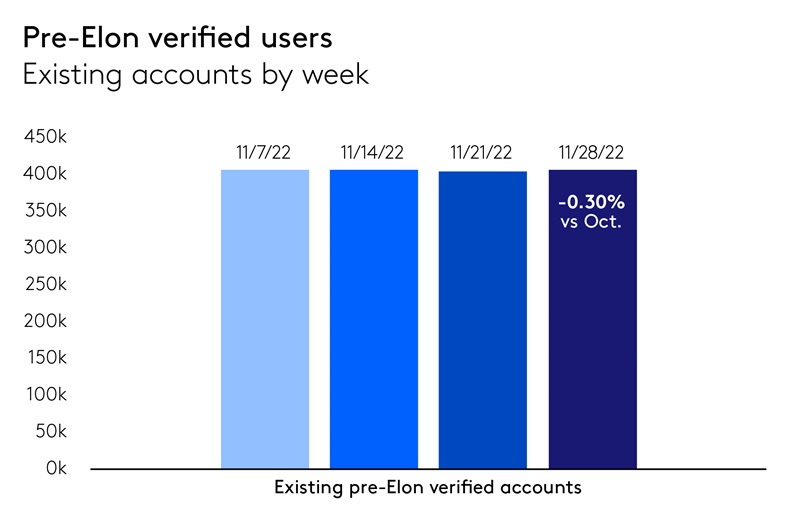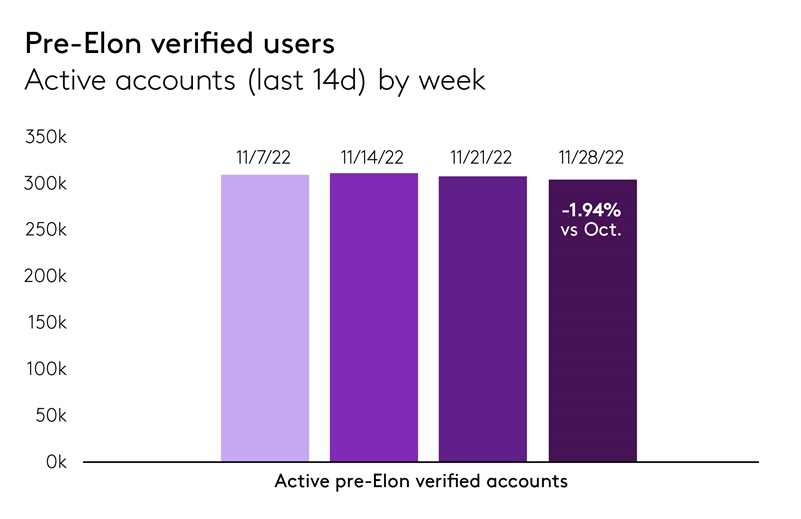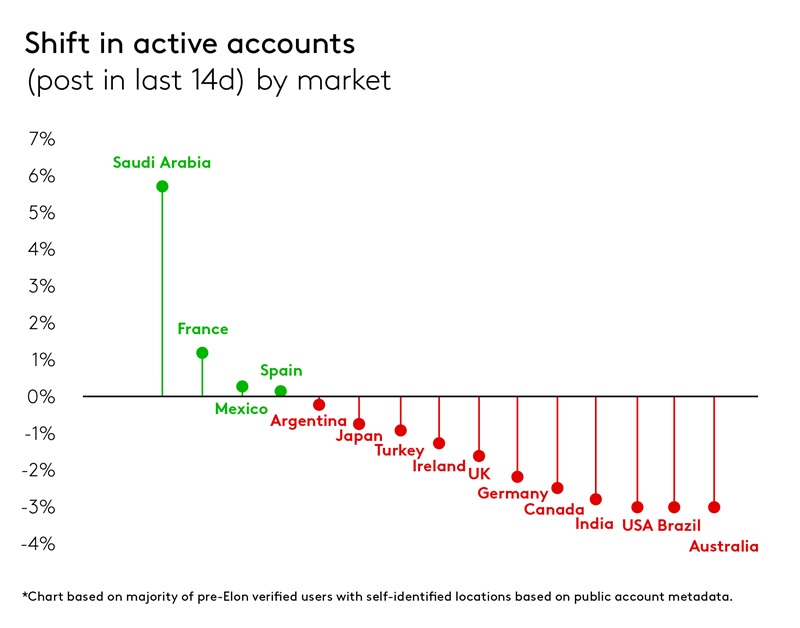For the broader context on why we and our clients are looking to confirm the stability and health of Twitter data, and previous updates in this series tracking these changes, check out our initial update here.
Methodology
For this second update, we are continuing to track whether there has been any substantial exit of influential accounts from the platform. Using our custom tech stack, we connected to Twitter’s API and built a full list of all verified accounts before the changes to the verification system. There were ~408,000 “Pre-Elon Verified Users”, including brands, politicians, journalists, celebrities, and other influential individuals across the world, on Nov 7th, and we are now able to compare that initial snapshot to the activity and account details of the same users in future periods to track deactivated or newly inactive accounts.
Nov 28th Update
Roughly four weeks after Twitter’s change in ownership, the overwhelming majority of the platform’s core influential users – the group of ~400,000 users globally who were verified in October 2022 – are still actively using Twitter. While many users are talking about Twitter like the platform is in its “final days”, 98% of the Pre-Elon Verified Users are still actively posting.
As of November 28th, only 0.3% of the “Pre-Elon Verified Users” have deactivated their Twitter accounts. However, as noted in the previous update, many Twitter users who have announced they are leaving the platform have left their accounts active to prevent another user from taking the handle and potentially impersonating them. Given this behavior, we believe the ideal metric to identify an exodus is whether these verified accounts are still contributing new content to the platform.

In this view, we can see that the number of Pre-Elon Verified Users who have posted new content within the past 14 days has dropped 2% compared to the number of these users who were active at the start of the month.

The chart below breaking out this shift by market shows that 2% drop in active usage was the Pre-Elon Verified User group was mostly evenly spread, with a notable exception of Saudi Arabia where verified users were more active than earlier. Given the constantly changing news, events (incl. the World Cup), and holiday calendars in all of these markets, these small differences (shown below) may be temporary noise which should not be over interpreted, but the pattern does confirm that the drop is not isolated to a single market or region.

This global shift then raises questions about how meaningful and significant a 2% drop in active usage from this influential group is. It is large enough to clearly not be statistical noise. But if the exits ended here and this was the full extent of the long-term loss from the change in ownership, it could be characterized as insignificant. The significance of the 2% loss in active usage hinges then on whether this is the beginning of a larger exodus, or a short-term, limited reaction to a chaotic recent period. Further updates in future weeks will help us confirm this trajectory.
Next Steps
Given the ongoing changes to the platform, Kantar’s Dx Analytics team will continue to monitor Twitter and identify any issues with its usage for consumer insights and strategic research.
In future updates, we will include additional datasets to analyze Twitter’s usage and salience, likely including analysis of :
- the salience of Twitter vs. its established competitors (Instagram, Reddit, YouTube) and newer competitors (Truth Social, Mastodon, etc.) using branded search interest data
- panel-based web traffic and app usage data to understand if there is any drop in general population site visits and DAUs on Twitter
- the continued usage of Twitter by priority Key Opinion Leader (KOL) groups, including Fortune 500 brands, journalists, and elected officials
- content moderation issues on the platform, including potential increases in hate speech, misinformation, and other brand safety risk factors
If you have any particular questions related to this topic and would like to connect with Kantar’s Dx Analytics Team team on our solutions please contact us here.

